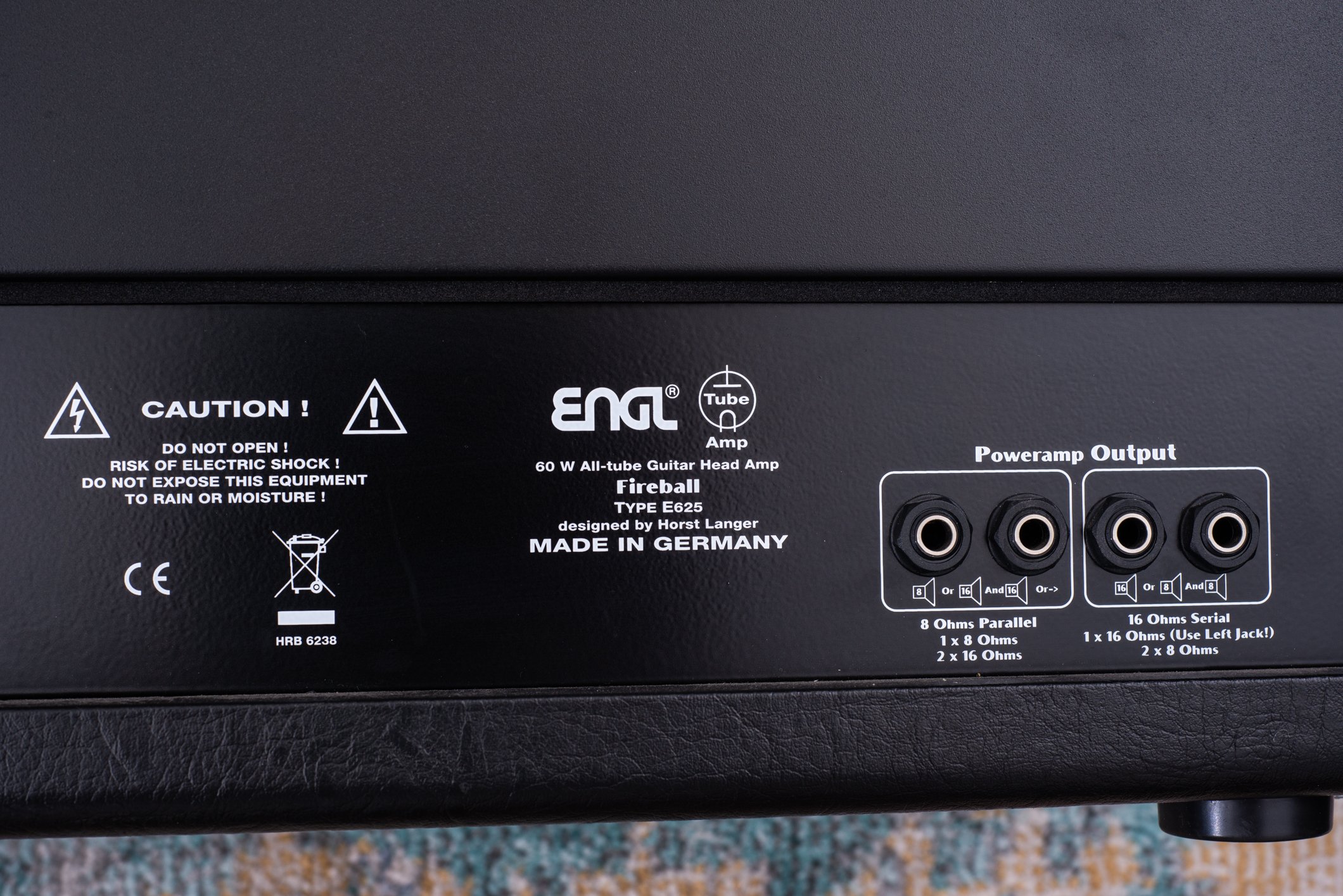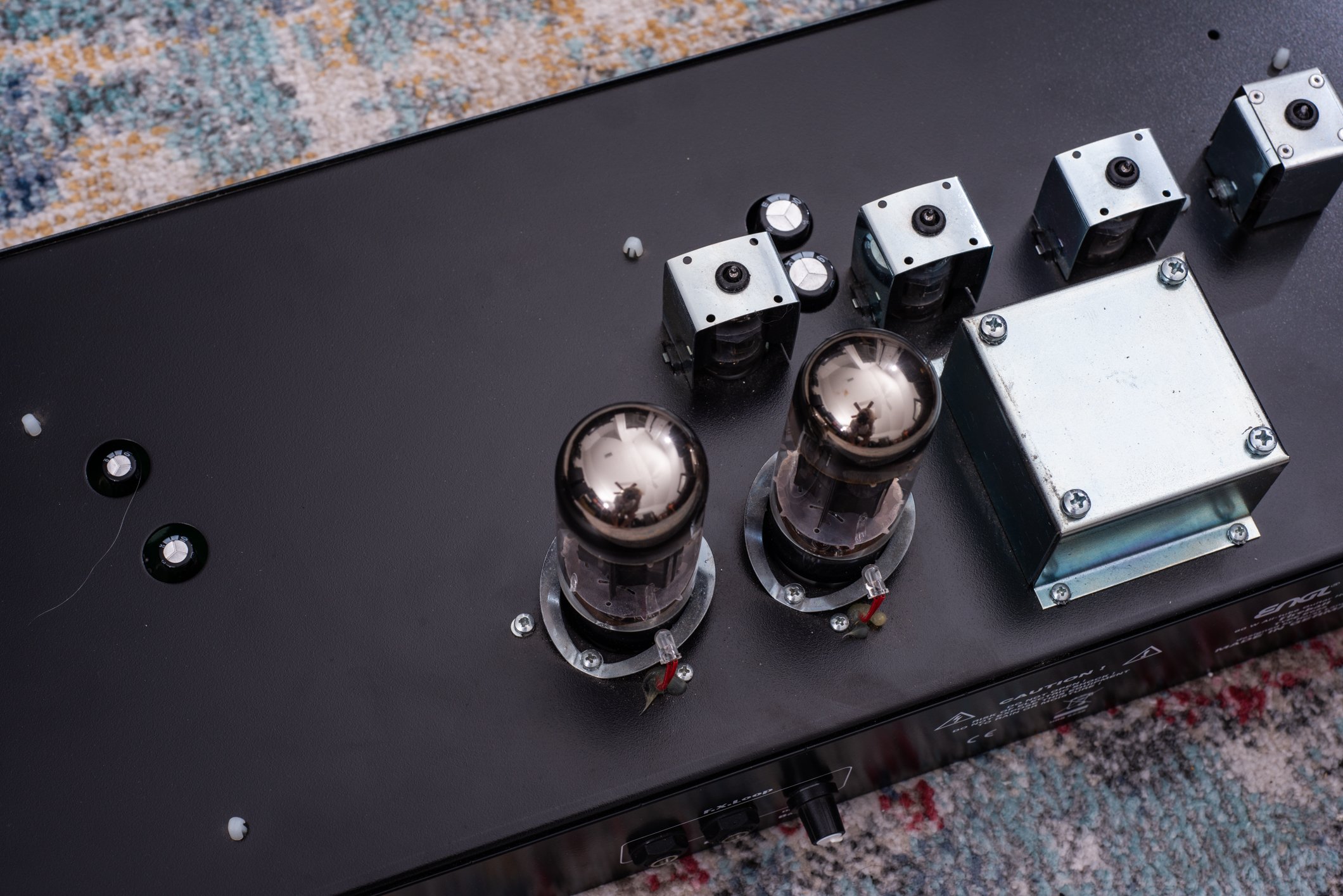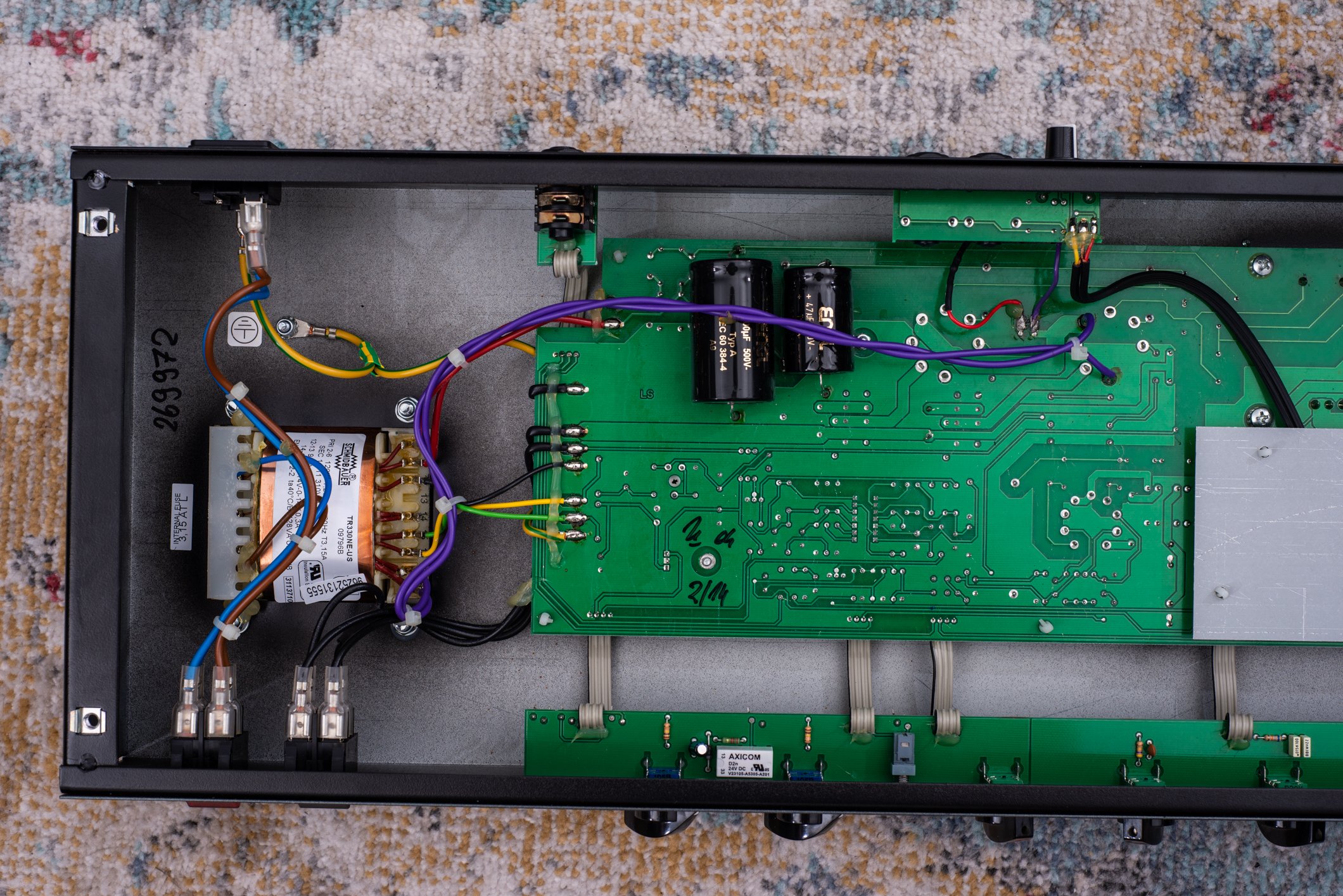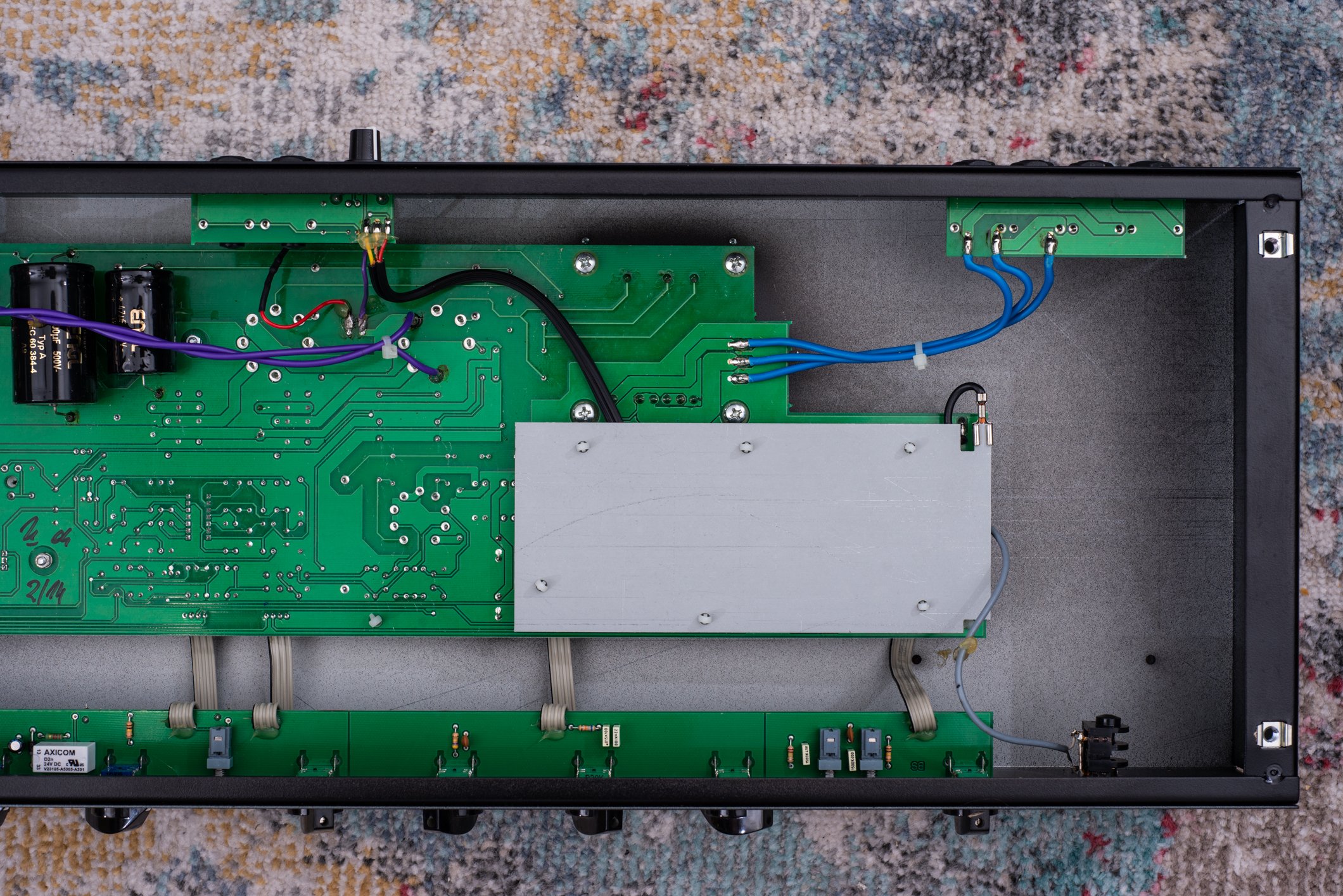2014 ENGL Fireball 60 (E625)
Specs
2 Channels
60w Output
New look - black faceplate & leather covering. Same circuit as previous silver version
2x 6L6 Power Tubes
4x 12AX7 Preamp tubes
Serial effects loop
2 Master volumes
1 or 2-button footswitch, 1/4” plug
$1399 in 2014
Made in Germany
Overview
I picked this up on a whim after spotting it for a very low price. I expected a silver-faced Fireball 60, old and beaten - but instead, a fairly new, leather covered one arrived!
This amp has two channels, a very clean channel that can get some dirt with the gain 3/4 up or higher, and an all out distortion channel with as much bass and saturation as other metal amps like the Peavey 6505, for example. However, the lack of separate gain controls does mean it really only works as a two channel amp if the two sounds you want are crystal clear clean and heavy distortion. This is because even with the gain set less than half (as shown in the picture above), the amp is at full modern metal saturation with a humbucker equipped guitar. If you need a crunch rhythm tone, you’ll be forced to use a pedal with this amp, as setting the gain to max will completely wash out the distortion channel into feedback and muddiness. I did try setting the gain much lower - around 9’oclock - to achieve a crunch tone on the distortion channel, but that tone is a bit anemic because the voicing is clearly intended for a higher gain tone. If you need those in-between kinds of tones, that’s what the Powerball is for, which shares the same lead channel circuit as this Fireball, but has four total channels and two separate EQ’s. Speaking of EQ, the Fireball does have a shared EQ for both channels, but I found the voice of the clean channel to be quite usable without adjusting it.
I’m very surprised at just how awesome this amp sounds. Since I already had the Invader, and picked up a Savage just a few weeks before this one, I really thought I’d seen the best that ENGL had to offer. I figured the Invader could do just about anything based on the way it is described, and I always wondered why the Powerball/Fireball amps seem to be the most popular ones. Well… now I get it. The lead channel tone is just powerful, resonant, and hits you right in the chest on palm mutes. The amount of gain is nearly excessive but can be dialed down and boosted for a slight flavor change, but the amp is plenty tight enough that no boost is ever required. It’s much more hi-fi sounding than the Savage, there is a lot more bass and more air in the treble frequencies. Of course I still love the Savage, it’s my favorite ENGL, but there are definitely tones that this amp does better, and it has something of an instant gratification appeal. I can see why these sell well, if I walked into a store and set all of the controls at noon and played this, I would be instantly pleased with my tone through just about any cabinet - the Invader and Savage can’t say the same and require more tweaking to get the best out of.
Another feature to mention is the dual master volumes, which can work a couple of ways. With a one-button footswitch, or no footswitch, the clean channel uses Master A, and the distortion channel uses Master B. This allows you to set two different volume levels or match them more closely if you want a clean-verse-to-distorted-chorus kind of thing without a volume jump. With a two button footswitch though, the first button switches channels and they will both use Master A, and the second button manually switches to Master B at any time. The idea is that you can have Master A for your rhythm tones, then switch to Master B for a fill or solo volume boost. However, this doesn’t quite work in practice because if both channels use Master A, then the distortion channel will be quieter than clean at the same setting. The only way I think this works is if you have a song that uses only one channel, and you just want the same tone but louder for a solo (ex. clean rhythm -> loud clean solo). You can’t use it like (clean verse -> distorted chorus -> loud distorted solo) without the clean channel being too loud. This is a more minor nitpick, but worth mentioning - and yet another reason to hunt down a Powerball or the Fireball 100 instead if you need better control.
The Fireball 100 is worth mentioning as well just because it’s essentially the same amp, of course with an extra pair of power tubes, but most importantly the 100 version has separate gain controls for both channels, plus a separate lead volume control that allows you to match the volumes better. This sorts out the volumes issue I mention above and lets you use it as more of a 2.5 channel amp in performance settings. The 100 version also has an additional “mid boost” switch as well as a built in noise gate, adjustable on the rear of the amp. This more stripped down 60 watt version lacks those controls, but it does have the Bright and Depth/Bottom controls, which work on both channels (although the Bright is very subtle on the lead channel).
Overall, an extremely pleasant surprise tonally, though it’s given me a push to hunt down a Powerball II soon!











